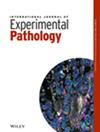High level of FHL2 exacerbates the outcome of non-small cell lung cancer (NSCLC) patients and the malignant phenotype in NSCLC cells
Abstract
Non-small cell lung cancer (NSCLC) is a malignant tumour with high mortality. FHL2 has been identified as a biomarker of lung cancer. This research explored the effects of FHL2 expression on NSCLC. NSCLC-associated data sets were collected from the assistant for clinical bioinformatics and TCGA databases respectively. The association between FHL2 and clinical characteristics, the prognostic significance of FHL2 and the influences of various variables on NSCLC were determined by Pearson's chi-squared test, the Kaplan–Meier curve and the Cox regression model respectively. FHL2 level was altered by cell transfection and was measured by qRT-PCR. Tumour xenograft formation was completed by inoculating sh-FHL2/pcDNA-FHL2 transfected cells into BALB/c nude mice. Protein expression was assessed by western blot. Cell apoptosis, proliferation and epithelial - mesenchymal transition (EMT) characteristics were evaluated employing TUNEL, BrdU+ and microscopic observation respectively. The expression of Ki67 and N-cadherin was assessed by immunohistochemistry. The results showed that FHL2 was highly expressed in NSCLC tissues. Patients with high FHL2 expression experienced lower overall survival probability. FHL2 knockdown promoted apoptosis, but inhibited EMT of A549 and NCI-H460 cells, which was verified by the increased ratios of cleaved caspase 9/caspase 9 and cleaved caspase 3/caspase 3, as well as augmented E-cadherin and reduced N-cadherin. In an in vivo assay FHL2 knockdown decreased tumour volume and weight, repressed EMT, but enhanced apoptosis. FHL2 upregulation showed the opposite effects of FHL2 knockdown. Furthermore, FHL2 upregulation facilitated cell proliferation both in in vitro and in vivo assays. These outcomes indicated that high level of FHL2 facilitated tumorigenesis, as well as the proliferation and EMT of NSCLC cells.


 求助内容:
求助内容: 应助结果提醒方式:
应助结果提醒方式:


